If you have been to the Bremen Viertel you know that it is probably the most vibrant part of the city. It hosts a wide array of bars, coffee shops, boutiques and restaurants. People are constantly walking through the streets and at night, especially on Fridays and the weekend, it becomes more alive. Another distinct characteristic of this district are its walls, lampposts, mailboxes, stops and virtually every other thing you will find there, because they are plastered with stickers, banners, graffiti and any type of signs promoting bands, activities, protests or movements. The Viertel is home for a variety of artists, artisans, families and upper middle class, trade and manufacturers, but it is also known generally for its political left orientation, thus all the signs you will find, particularly those about social movements, will be in defense of the LGBTQ+ community, feminism, refugees, the Antifa and against police violence, imperialism and the AfD (Alternative for Germany). But all this vibrancy brings its own consequences, and in this case high demand of living space meets its low supply.
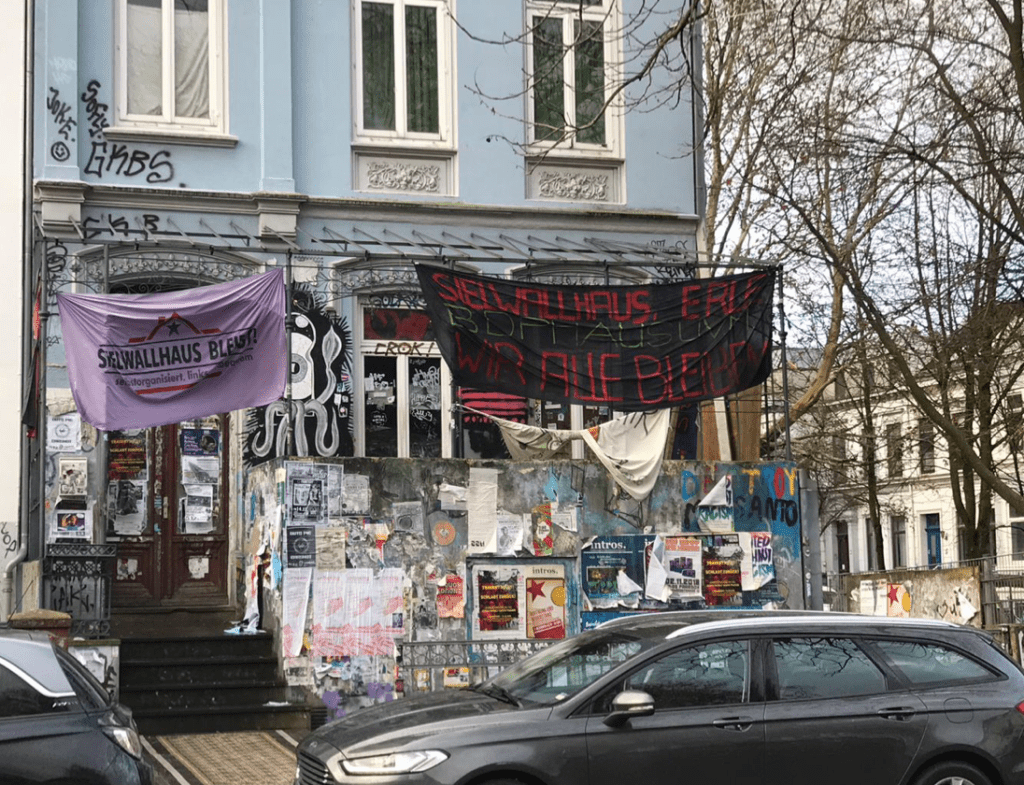
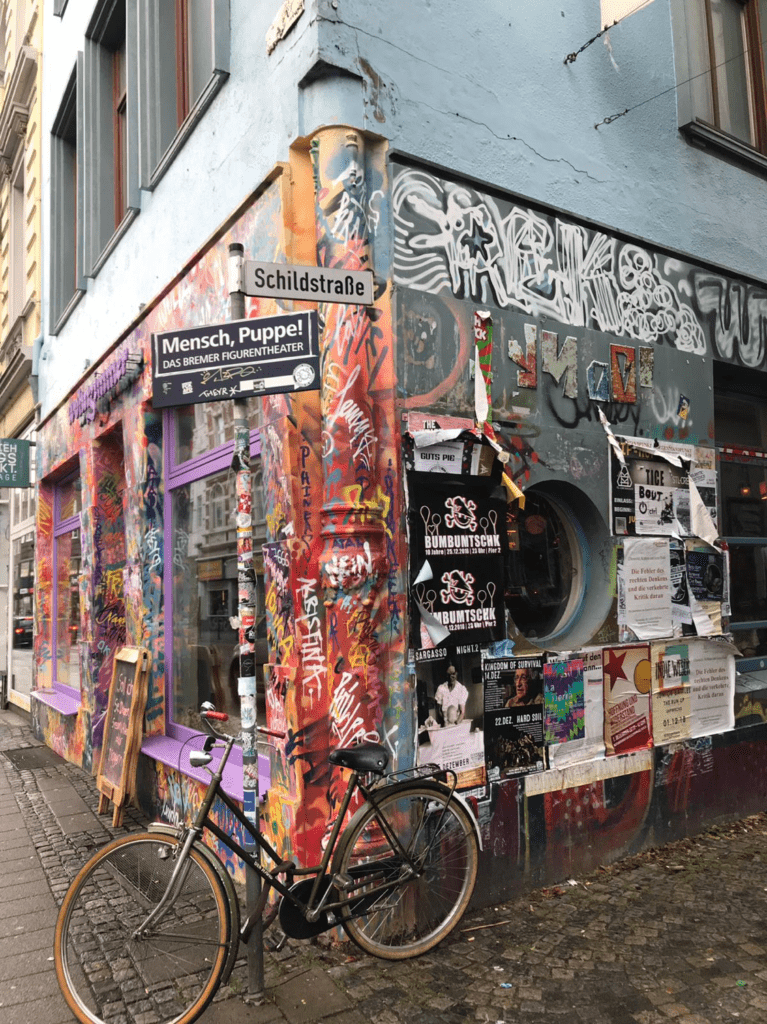
Bremen is a city that struggles with little to none living space in multiple districts. Students, just as people from diverse backgrounds, suffer the consequences every semester when they are in the search for an apartment which they will very likely share with roommates (known in Germany as Wohngemeinschaft or WG). Because of this constant struggle, there are multiple projects to create more living space, and among the efforts directed towards the Bremen Viertel we find the construction project 133 in the Blumenstrasse. The development in the street of this part of town, began in recent years after an investor bought a plot of land that is currently a parking lot. The intention is to transform the space into a house with various flats. Although the idea of more living space in such an attractive part of town may have been welcomed, there is more to the story.
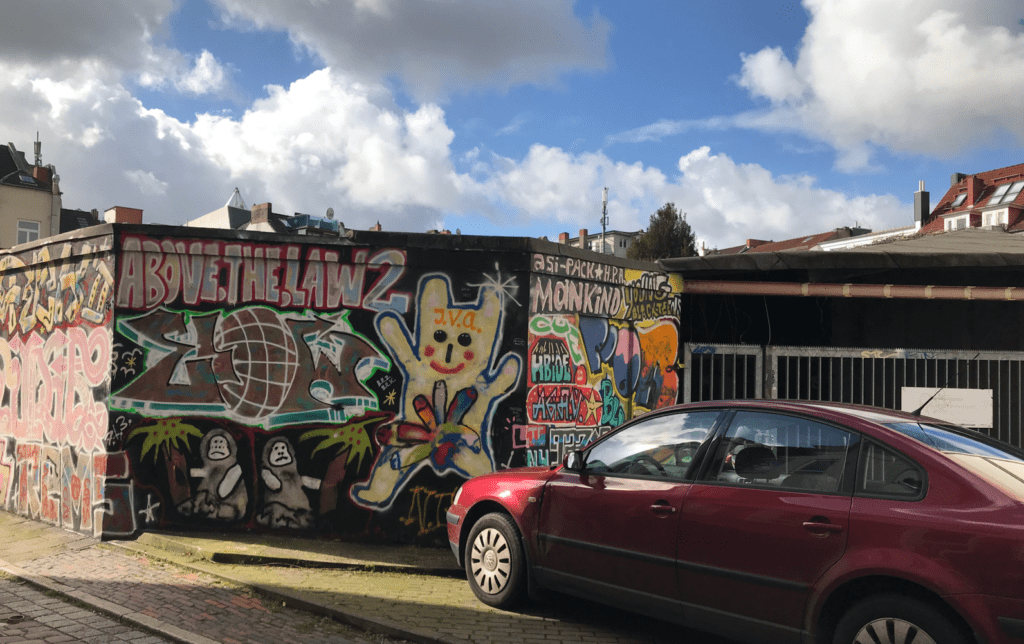
The plans have brought discontent and disagreement among the neighbors of the surroundings since many of them do not like the idea of building a huge building in their direct neighborhood. Many of them believe the new construction will affect their landscape, decrease the sunlight access and disrupt the existing architecture and the aesthetics of the area. As a result, when you walk through the Viertel’s main street and the streets surrounding the Blumenstrasse, you will find handcrafted banners protesting the construction. The banners read “Blumenstrasse wird zugebaut! Widersprecht jetzt!” which calls people to refuse the construction on the Blumenstrasse now.
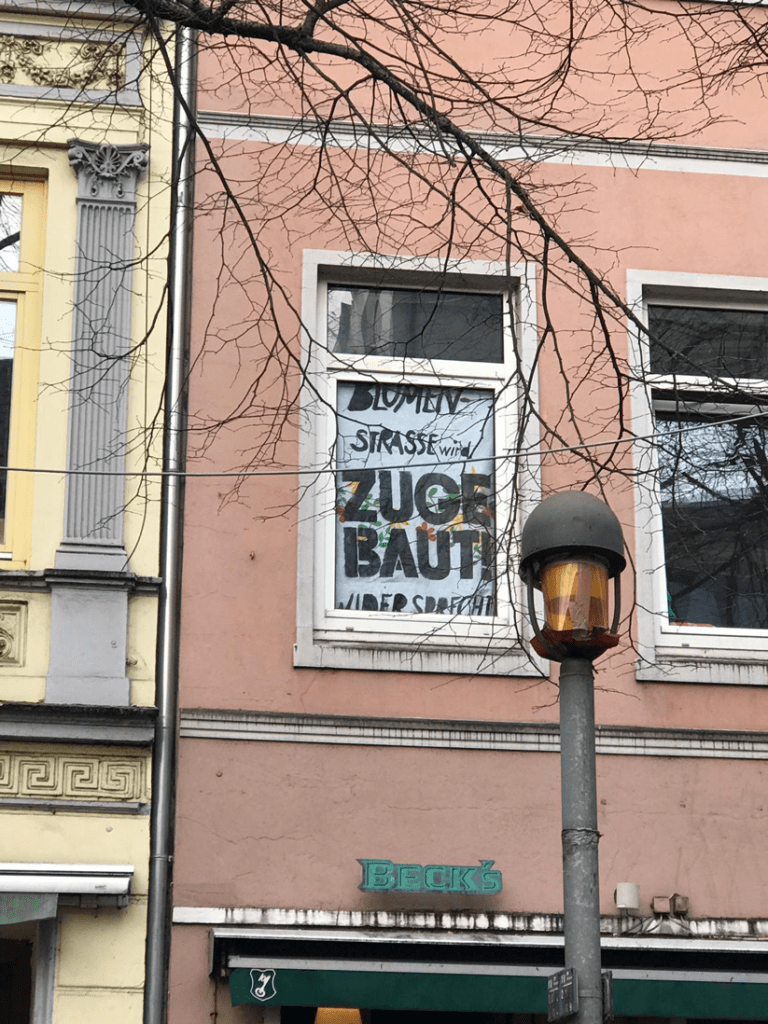
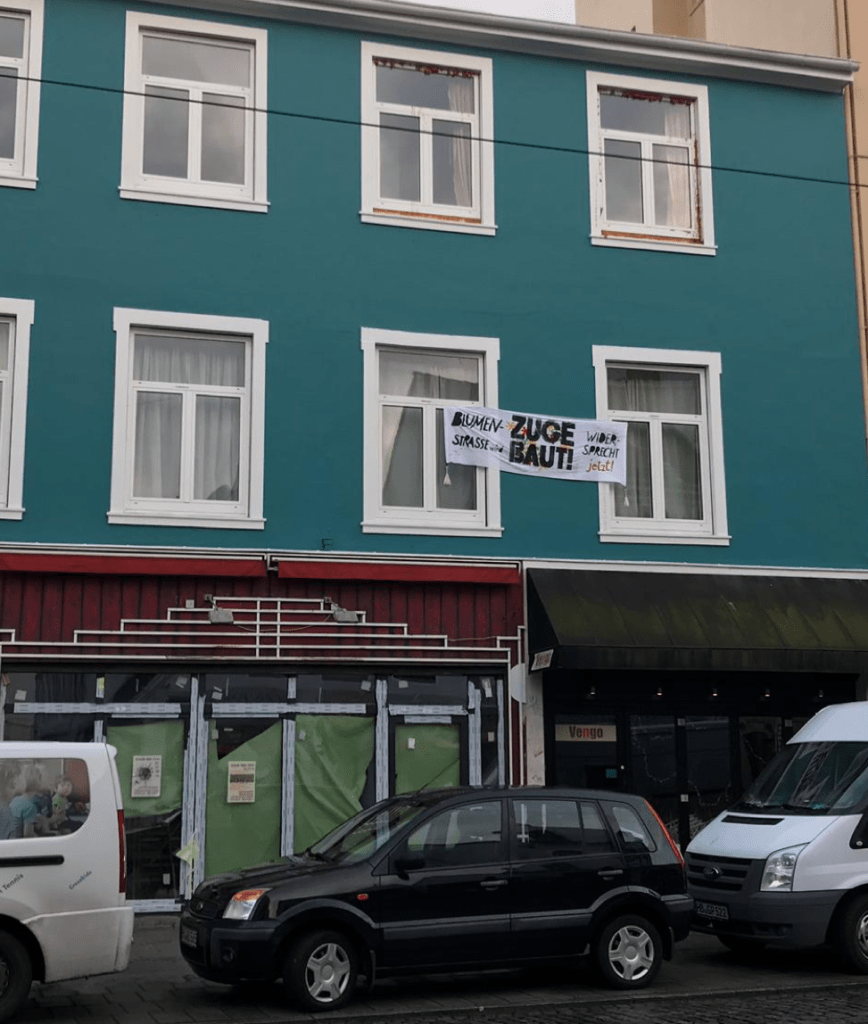
In January 2018, there was a first meeting with the residents of the surroundings, in accordance with §3(1) of the German Building Code (BauGB), to discuss the construction proposal. The neighbors had many complaints about the height, width and depth of the structure. Later in the summer, the local Council of the Viertel (Beirat Mitte) hosted another meeting with the residents, investors, architects and city planners, to talk about the intended building. Some of the neighbor’s demands were met by the investor and his architects in favor of reaching a commitment by reducing the building’s measures. Nevertheless, they continued to be unhappy with the proposal and filed more than 76 complaints to the Senate and the Council of the Viertel.
The neighbors and the “Bürgerinitiative Blumenstrasse” (Blumenstrasse citizen’s group) took the local protest online in the last months of 2018 and started a petitionto change the existing construction plans for a friendlier alternative that would be more appropriate according to the architecture in the district. They argue that, considering many of the buildings around the desired construction area are old, the works would endanger them and this petition calls for a “lower, less deep, narrower and generally restrained development […] as long as the requirements of Monument Law are met and sufficient development is ensured.” However, there is a lack of consensus among the residents; some are against the construction altogether since they feel it would make for a more crammed space. Even so, one could maintain that the building would stand in lieu of an already existing structure, which is a parking lot. Some of the residents would like the parking lot to remain for their own benefit and others fear it would reduce sunlight access or endanger their own surface.
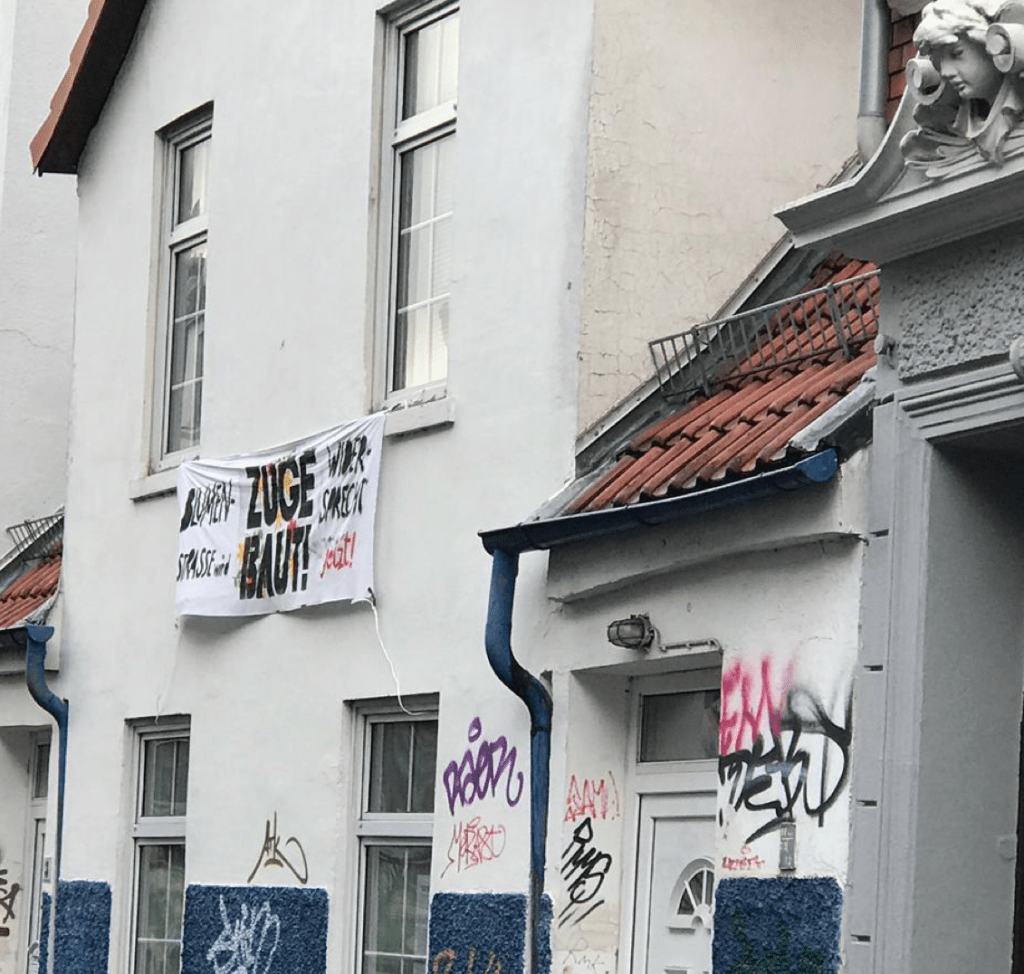
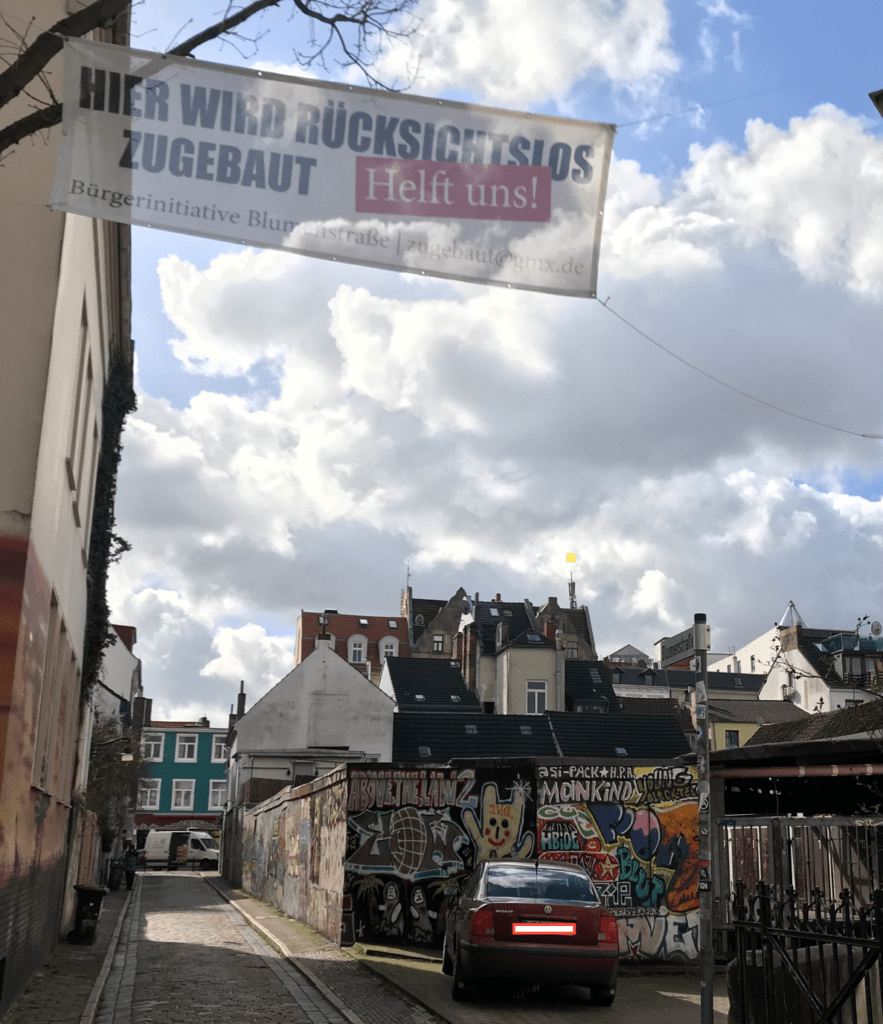
The “Blumenstrasse wird zugebaut!” is a case of local protests born from the Viertel’s community that uses more traditional practices as banners and leaflets in the neighbor’s mailboxes, but adheres to new practices going online, not only with the petition, but with a Facebook page to create conscience and call people to support their cause. Moreover, regarding the impact of the protest, it is difficult to assess the results considering that the project remains in an evaluation process. However, the current plans comply with all the legal requirements, thus it appears an uphill battle to appeal the case on a legal basis. Any further adjustments or modifications to the structure would be a gesture of goodwill towards the neighbors.
Details and information were consulted with Mrs. Manuela Jagemann from the Fachausschuss Bauen, Wohnen und öffentlicher Raum der Beirat Östliche Vorstadt Bremen (Technical Committee for Construction, Living and Public Spaces at the Council of the East Municipality)
Images taken by María Alejandra León
